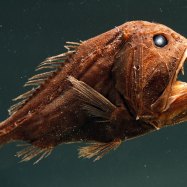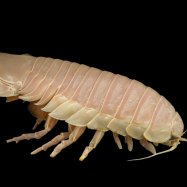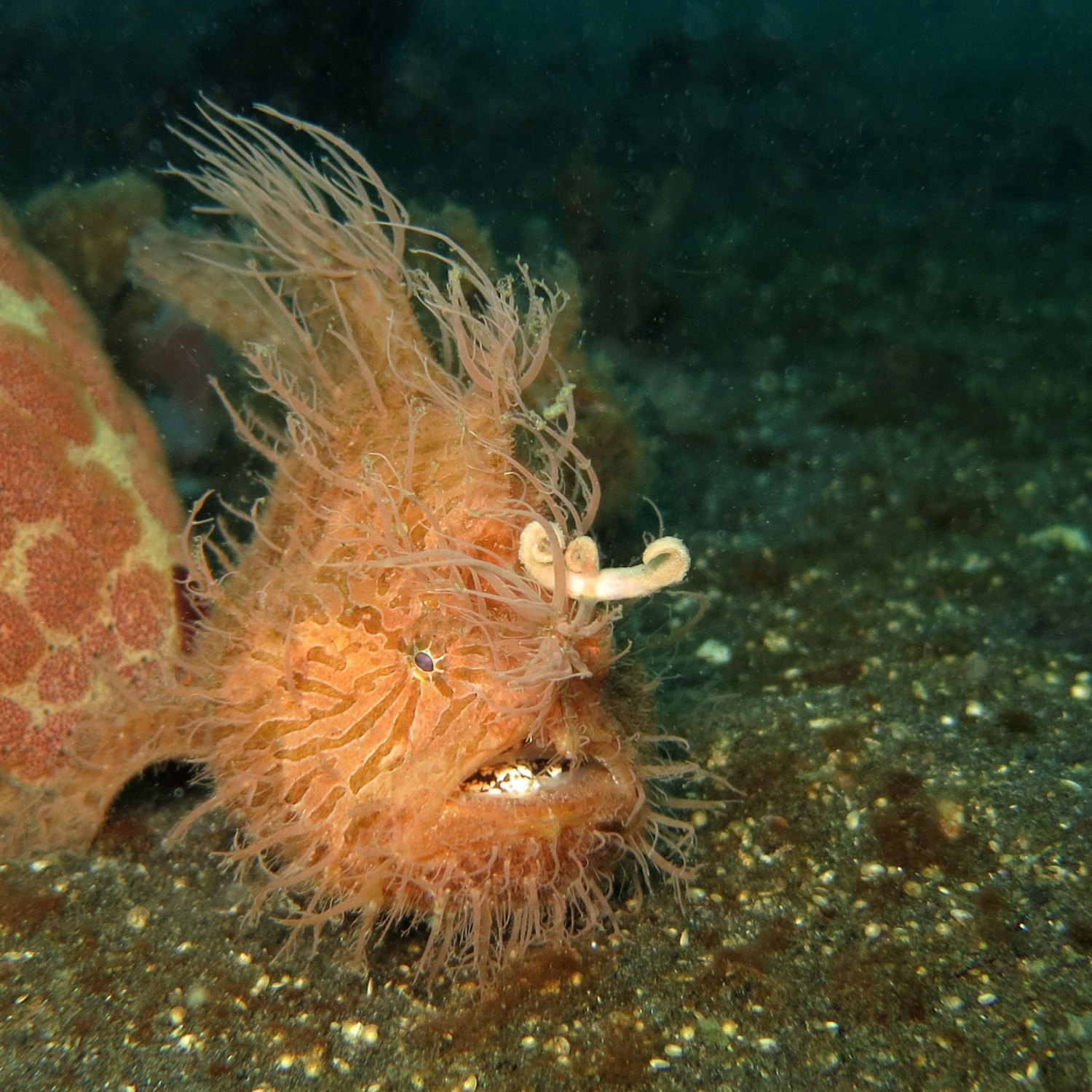
Hairy Frogfish
6-12 cm
The Hairy Frogfish, a member of the Antennariidae family, is a small but fascinating creature found in coral reefs. With a stocky and compressed body shape, it grows 6-12 cm in length. Though it may not be the most attractive, its unusual appearance and unique hunting techniques make it a must-see for divers and underwater photographers. #HairyFrogfish #CoralReefs #Antennariidae #UnderwaterLife
Animal Details Summary:
Common Name: Hairy Frogfish
Kingdom: Animalia
Habitat: Marine
The Fascinating World of the Hairy Frogfish: A Master of Camouflage
Have you ever heard of an animal that looks like a walking ball of hair? Meet the Hairy Frogfish, also known by its scientific name Antennarius striatus. This peculiar creature is a master of disguise, blending into its surroundings through its unique appearance and behavior. In this article, we will explore the fascinating world of the Hairy Frogfish and uncover its secrets.Kingdom and Classification
The Hairy Frogfish belongs to the kingdom Animalia, which includes all animals with cells that lack cell walls Hairy Frogfish. It is also classified under the phylum Chordata, class Actinopterygii, and order Lophiiformes. These classifications place the Hairy Frogfish in the same group as other fish species such as anglerfish, seahorses, and pipefish. However, what sets the Hairy Frogfish apart from its relatives is its unique family, Antennariidae, which is named after its characteristic antenna-like lure used for hunting.Habitat and Distribution
The Hairy Frogfish is a marine animal that can be found in the Indo-Pacific region, particularly in the areas of Indonesia. It inhabits coral reefs, where it can easily camouflage among the corals and rocks. This region is known for its diverse ocean life and is home to various marine creatures. The Hairy Frogfish, with its unique appearance, is one of the many fascinating species found in this region.Feeding Behavior
Unlike other fish that use speed and agility to catch prey, the Hairy Frogfish is an ambush predator. It relies on its excellent camouflage and its striking speed to catch its food Hammerhead Shark. It uses its antenna-like lure to attract prey, and when they come close enough, it uses its large mouth to suck them in. This feeding method is a testament to the Hairy Frogfish's adaptability and evolution to survive in its environment.Appearance
The most striking feature of the Hairy Frogfish is its appearance. As the name suggests, the body of this fish is covered in small hair-like projections, giving it a furry appearance. These projections are actually modified scales that provide the perfect surface for algae and other small organisms to grow, making the Hairy Frogfish even more difficult to spot. Its body shape is stocky and compressed, allowing it to blend seamlessly into its surroundings. The Hairy Frogfish can grow up to 6-12 cm in length, making it a relatively small fish.Variable Coloration
One of the most incredible features of the Hairy Frogfish is its variable coloration. This species can change its color to match its surroundings, much like a chameleon. It has the ability to change its color from shades of red, yellow, orange, brown, and even black. This camouflage helps the Hairy Frogfish to avoid predators and surprise its prey, making it a successful hunter.Camouflaging Techniques
Apart from its appearance and color-changing abilities, the Hairy Frogfish also uses other camouflaging techniques to blend into its surroundings. It can change its body shape, making itself look like a lump of coral. It can also move slowly, mimicking the movements of nearby coral, further adding to its camouflage. These techniques not only help the Hairy Frogfish to hide but also allow it to catch its prey by surprising them.The Fascinating World of Mimicry
Apart from its camouflaging abilities, the Hairy Frogfish is also known for its mimicry skills. It can mimic the movements of various creatures such as worms and smaller fish, luring them towards its mouth. It can even mimic the appearance of sponges, making it almost impossible for predators to spot. These mimicry skills are a result of years of evolving and adapting to survive in the harsh marine environment.Intelligence and Adaptability
The Hairy Frogfish's ability to camouflage, change color, and mimic its surroundings and prey is a testament to its intelligence and adaptability. It has evolved to become a master of disguise, using its unique features to survive in its environment. This species has also adapted to the ever-changing ocean environment, making it a successful predator and a unique addition to the underwater world.In Conclusion
The Hairy Frogfish, with its peculiar appearance and impressive camouflaging abilities, is a fascinating creature. Its mastery of disguise and mimicry, along with its intelligence and adaptability, makes it a top predator in the marine world. As we continue to discover more about the wonders of our oceans, the Hairy Frogfish serves as a reminder of the vast array of life that exists beyond our daily experience. So, the next time you're near a coral reef, keep a lookout for this hidden gem and marvel at its incredible abilities.

Hairy Frogfish
Animal Details Hairy Frogfish - Scientific Name: Antennarius striatus
- Category: Animals H
- Scientific Name: Antennarius striatus
- Common Name: Hairy Frogfish
- Kingdom: Animalia
- Phylum: Chordata
- Class: Actinopterygii
- Order: Lophiiformes
- Family: Antennariidae
- Habitat: Marine
- Feeding Method: Ambush predator
- Geographical Distribution: Indo-Pacific region
- Country of Origin: Indonesia
- Location: Coral reefs
- Animal Coloration: Variable
- Body Shape: Stocky and compressed
- Length: 6-12 cm
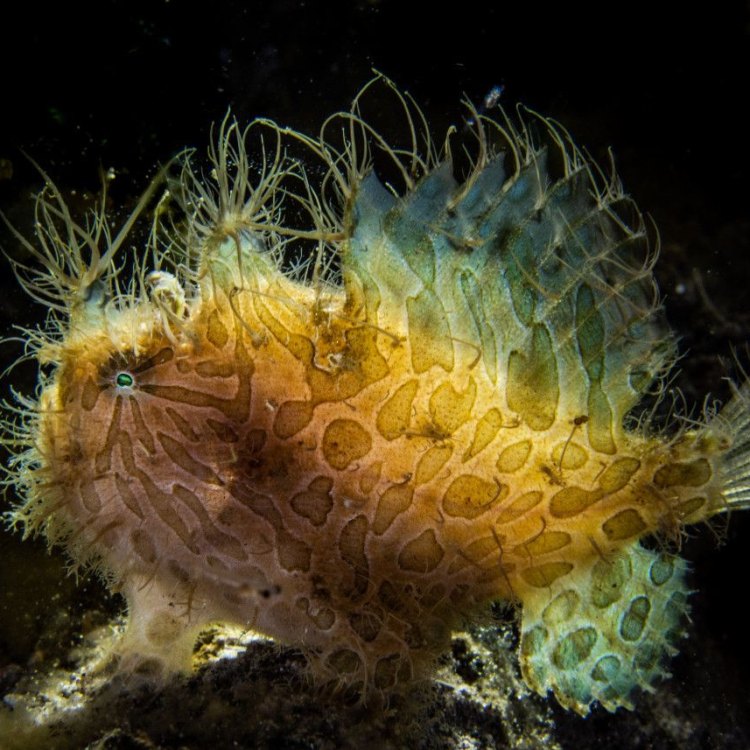
Hairy Frogfish
- Adult Size: Up to 15 cm
- Average Lifespan: 1-2 years
- Reproduction: Oviparous
- Reproductive Behavior: External fertilization
- Sound or Call: None
- Migration Pattern: Non-migratory
- Social Groups: Solitary
- Behavior: Camouflage, slow movement
- Threats: Habitat destruction, overfishing
- Conservation Status: Not evaluated
- Impact on Ecosystem: Important predators in coral reef ecosystems
- Human Use: Aquarium trade
- Distinctive Features: Camouflage, lure-like appendage, hairy appearance
- Interesting Facts: Can change color and shape to blend with its surroundings
- Predator: Bigger fish
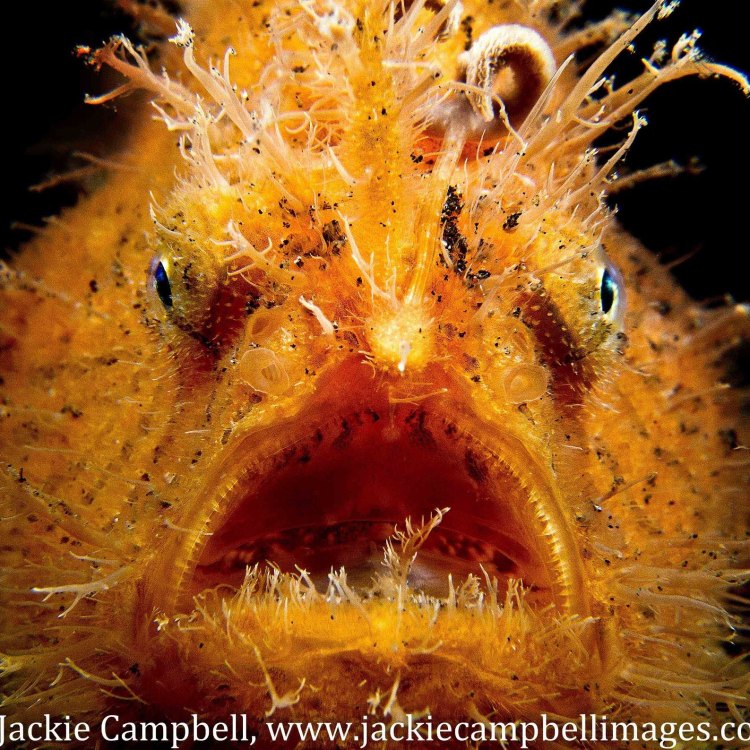
Antennarius striatus
The Fascinating Hairy Frogfish: A Master of Camouflage
In the vast ocean depths where creatures of all shapes and sizes roam, there is one particular fish that stands out – the hairy frogfish. With its unique features and intriguing behavior, this fish continues to captivate the attention of scientists, marine enthusiasts, and divers alike. Let us delve into the world of the hairy frogfish and discover what makes it truly one of a kind.Meet the Hairy Frogfish
The hairy frogfish, also known as the hairy anglerfish, is a small-sized fish that belongs to the Antennariidae family PeaceOfAnimals.Com. It can be found in tropical and subtropical waters, primarily in the Indian and Pacific Oceans. Despite its name, this fish is not actually covered in hair; rather, it has small, hair-like growths all over its body, which give it its unique and distinct appearance.On average, the hairy frogfish can grow up to 15 cm in length and has an average lifespan of 1-2 years. However, due to its elusive nature and natural camouflage, it is challenging to determine its precise numbers and survival rate in the wild.
Reproduction and Behavior
The reproductive behavior of the hairy frogfish is quite fascinating. It is an oviparous species, meaning it lays eggs, and the young hatch outside the mother's body. The female frogfish produces a gelatinous capsule where she will deposit her eggs. After mating, the male frogfish will fertilize the eggs externally by releasing his sperm over the capsule.The parental care in this species is minimal, with the mother leaving the eggs to develop on their own Hoopoe. Likewise, the newborn fry is fully independent and must fend for themselves from the moment they hatch.
Apart from its unique reproductive behavior, the hairy frogfish is also known for its solitary nature. It tends to stay alone, only coming together with other frogfish during mating season. Furthermore, its behavior and movement are quite distinct. This fish is typically sluggish, making slow movements, which helps in conserving energy.
However, its lethargic behavior is not a disadvantage, as it adds to its excellent camouflage capabilities. The hairy frogfish has the remarkable ability to change its color and shape to blend in with its surroundings. With its protuberances and appendages, it can mimic sponges, corals, or rocks to become almost invisible to its prey or predators.
Threats and Conservation
Like many other marine creatures, the hairy frogfish is facing threats due to human activities. Habitat destruction, primarily through bottom-trawling and coastal development, is a significant threat to this species. Overfishing has also taken a toll on its population, as it is often caught as bycatch in various fisheries.Unfortunately, due to its elusive nature and lack of proper studies, the hairy frogfish's conservation status is yet to be evaluated. Despite its importance in the ecosystem, it remains vulnerable to these human-induced threats.
The Hairy Frogfish and Its Role in the Ecosystem
The hairy frogfish may be small, but it plays a crucial role in maintaining the balance of the coral reef ecosystem. As ambush predators, they feed on smaller fish, crustaceans, and even other frogfish. This helps in controlling the population of these creatures and preventing overpopulation, which could harm the reef's health.Moreover, the hairy frogfish's excellent camouflage capabilities make it a valuable predator in the coral reef environment. Its ability to blend in with its surroundings allows it to sneak up on unsuspecting prey, maintaining a healthy ecosystem where all creatures have a chance of survival.
Human Use and Conservation Efforts
Despite its importance in the ecosystem, the hairy frogfish is also utilized for human entertainment. It is a prized possession in the aquarium trade, with its unique appearance and behavior drawing many enthusiasts. However, this growing demand poses a threat to its natural population, and measures need to be taken to ensure sustainable practices in capturing and transporting this species.In recent years, there have been efforts by conservation groups and dive organizations to raise awareness about the hairy frogfish and its conservation needs. By educating the public about this unique and fascinating species, it is hoped that more people will appreciate and help protect it in its natural habitat.
The Predators of the Hairy Frogfish
Despite its impressive camouflage and hunting skills, the hairy frogfish is not entirely safe in its underwater world. It faces threats from larger predators, including sharks, eels, and other fish. These creatures can easily spot and prey on the frogfish, especially when it is in the open or when its disguise fails.However, the biggest predator of the hairy frogfish is actually humans. As mentioned earlier, overfishing poses a significant threat to its survival, and it is essential to address this issue to protect this unique species.
In Conclusion
In conclusion, the hairy frogfish is a fascinating and remarkable creature of the oceans. With its unique features, camouflage abilities, and intriguing behavior, it continues to capture the interest of scientists and enthusiasts alike. However, like many other marine species, it faces threats, and efforts need to be made to ensure its preservation for future generations to appreciate and learn from.As we continue to unravel the mysteries of the underwater world, let us remember to protect and preserve the habitats of these amazing creatures, such as the hairy frogfish. By doing so, we can ensure that they will continue to thrive and enchant us with their beauty and charm for years to come.
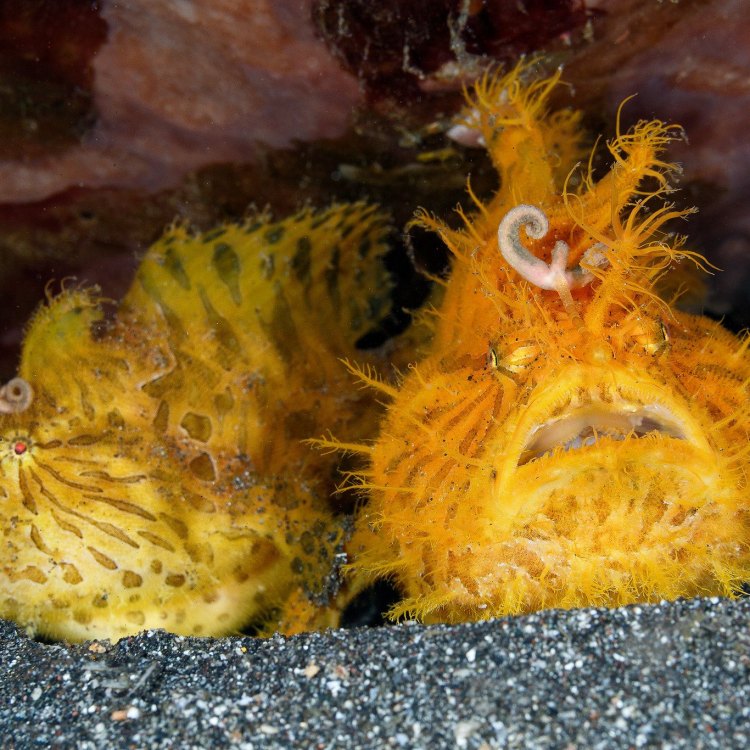
The Fascinating World of the Hairy Frogfish: A Master of Camouflage
Disclaimer: The content provided is for informational purposes only. We cannot guarantee the accuracy of the information on this page 100%. All information provided here may change without prior notice.

